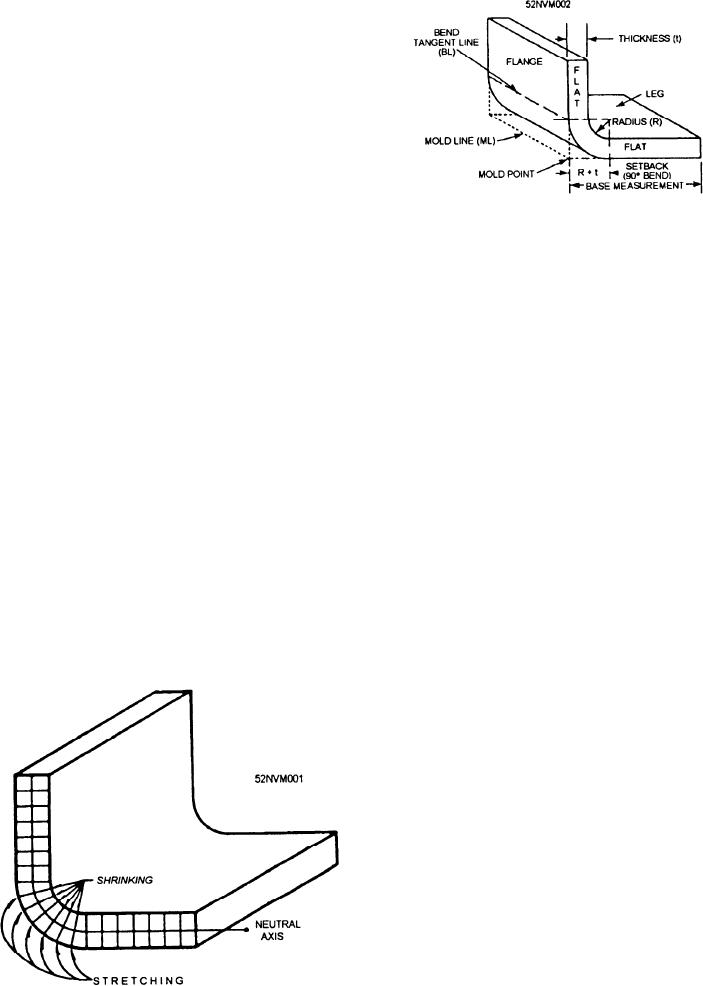
The amount of material required is known as the bend
allowance.
In bending, the metal is compressed on the inside
of the bend, and stretched on the outside of the bend.
Halfway between these two surfaces or extremes is a
space that neither shrinks nor stretches but retains the
same length. This is known as the neutral axis. Figure
13-47 shows the neutral axis of a bend. The bend
allowance is computed along this neutral axis.
Bend Allowance Terms
Figure 13-48.--Bend allowance terms.
To understand the calculation and discussion of
bend allowance, you need to be thoroughly familiar
RADIUS (R)--The radius of the bend. It is always
with the definitions used to calculate bend allowance.
measured from the inside of the bend unless
As you study the definitions, refer to figure 13-48 and
otherwise stated.
locate each part described. Some parts are not shown
SETBACK (SB)--The amount that the two mold
in the figure but are described in the text. This section
line dimensions overlap when they are bent around
may be difficult to understand. You may need to go over
the formed part. In a 90-degree bend, SB = R + t
it with a more experienced HT. The definitions are as
(radius of the bend plus thickness of the metal).
follows:
BEND LINE (also called brake or sight line)--The
LEG--The longer part of a formed angle.
layout line on the metal being formed which is set
FLANGE--The shorter part of a formed angle. If
even with the nose of the brake and serves as a guide
both parts are the same length, each is known as a
in bending the work. (Before forming a bend, you
leg.
must decide which end of the material can be most
conveniently inserted in the brake.) The bend line
MOLD LINE (ML)--The line formed by extending
the outside surfaces of the leg and flange so that
is then measured and marked off with a soft pencil.
they intersect.
Measure from the bend tangent line closest to the
end that is to be placed under the brake. This
BEND TANGENT LINE (BL)--The line at which
measurement should be equal to the radius of the
the metal starts to bend.
bend. The metal is then inserted in the brake so that
BEND ALLOWANCE (BA)--The amount of
the nose of the brake will fall directly over the bend
material consumed in making the bend.
line.
FLAT PORTION OR FLAT--The flat portion or
flat of a plate is that portion that is not included in
the bend. It is equal to the base measurements
minus the setback.
B A S E MEASUREMENT (or mold line
measurement)--The base measurement is the
outside dimensions of a formed plate. Base
measurement will either be given on the blueprint
or drawing, or it may be obtained from the original
part.
CLOSED ANGLE--An angle that is less than 90
when measured between legs, or more than 90
when the amount of bend is measured.
OPEN ANGLE--An angle that is more than 90
when measured between legs, or less than 90 when
the amount of bend is measured.
Figure 13-47.--Neutral axis.
13-41

